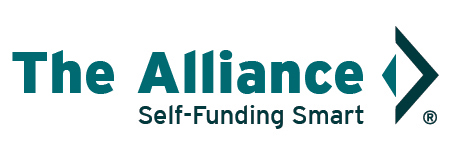Leveraging Data Can Help Employers Manage Rising Healthcare Costs
By Ryan Peterson, Director of Analytics
 Over the last decade, wages have increased 54% while healthcare costs have increased by a staggering 230%. Additionally, hospital prices increased by 80%, significantly more than premium or pharmacy costs. These statistics underscore the need for employers to dig deep into healthcare spending patterns, identify areas for optimization, and empower their workforce to be smarter healthcare consumers.
Over the last decade, wages have increased 54% while healthcare costs have increased by a staggering 230%. Additionally, hospital prices increased by 80%, significantly more than premium or pharmacy costs. These statistics underscore the need for employers to dig deep into healthcare spending patterns, identify areas for optimization, and empower their workforce to be smarter healthcare consumers.
Cora Opsahl, director of the 32BJ Health Fund, emphasized the pivotal role of data analytics in shaping health benefit plans at The Alliance’s 2024 Spring Symposium. The 32BJ Health Fund is a powerful example of the transformative power of data-driven decision-making to manage healthcare costs while improving benefits. Using insights from data analytics, Cora has implemented multiple benefit changes for the 32BJ Health Fund that saved more than $35 million in 2022.
Why Care About Data?
The Consolidated Appropriations Act of 2021 (CAA) codified employers' right to access their healthcare data and formalized their fiduciary responsibility for employers. Under the Transparency in Coverage (TiC) rule, employers have a right to know what they are paying for healthcare and how it compares to what others are paying for the same services.
Data analytics help employers understand where their healthcare dollars are being spent. For example, prices for certain procedures vary greatly between providers, especially “shoppable” services like colonoscopies, imaging services, carpal tunnel surgeries, and orthopedic services such as knee, hip, and shoulder surgeries. By using data analytics, employers can see where their plan participants are going for these services and where they could go instead to save the plan money.
How to Leverage Data?
When it comes to data analytics, Cora recommends starting with the basics and digging deeper as you gain more understanding of what you’re looking at and how to apply those insights to your benefit plan. You may want to consider using internal resources, hiring a data analyst, or working with a consultant like The Alliance to understand your data.
Data 101
The first level of data analytics is to understand the who, what, where, and how of the claims data.
- How much are you spending?
- Where are you spending?
- What services are you spending on?
Once you answer these questions, you can decide how to steer employees to providers and service locations that provide good care at lower prices. Site of service steering is effective and relatively straightforward to implement.
First, make sure employees know to utilize their primary care provider (PCP) for non-urgent health concerns. Their next step should be to utilize urgent care before seeking ER services. If the patient needs surgery, they can consider an ambulatory surgical center (ASC) which has lower costs than hospital services. If that is not possible, then try outpatient surgery and finally inpatient. Because inpatient and outpatient hospital costs are 44% of the average employer’s healthcare spend, directing employees to the appropriate site of care can make a big difference.
Data 201
After you understand where your most expensive claims are coming from, you can take a deeper dive into your cost trends over time. To find cost drivers, you can analyze the data by disease state, drug, or health system. When you know your main cost drivers over time, you can make decisions about how to reduce or eliminate these costs. This may mean implementing a care advisor, identifying and steering away from low-value providers and systems, or further incentivizing patients by offering free healthcare at preferred-value providers.
Data 301
Finally, you can perform a more complex data analysis to see what factors are impacting your spending trend. Then, you can use these insights to create a plan design that can facilitates savings and improves plan participants’ lives. You can also use the information from your analysis to evaluate your current health benefit vendors. You can read more about how to choose effective benefit partners here.
Transparency Tools
Below are a few tools you can use to compare healthcare costs and make more informed decisions for your benefit plan.
Building Trust through Transparency
Embracing data analytics in benefit planning is a necessity in rebuilding trust and driving meaningful change in healthcare. By empowering employers with actionable insights and fostering a culture of transparency, we can pave the way for a healthcare system that is not only more affordable but also more equitable and sustainable.
Analyzing your data is challenging, but if you commit, it can make a huge difference in your benefit plan. The Alliance is hosting three data workshops this summer in which we’ll help you make sense of your data in real time. Save your spot to transform your benefit plan for your business and your employees.



 This post is locked to comments.
This post is locked to comments.
